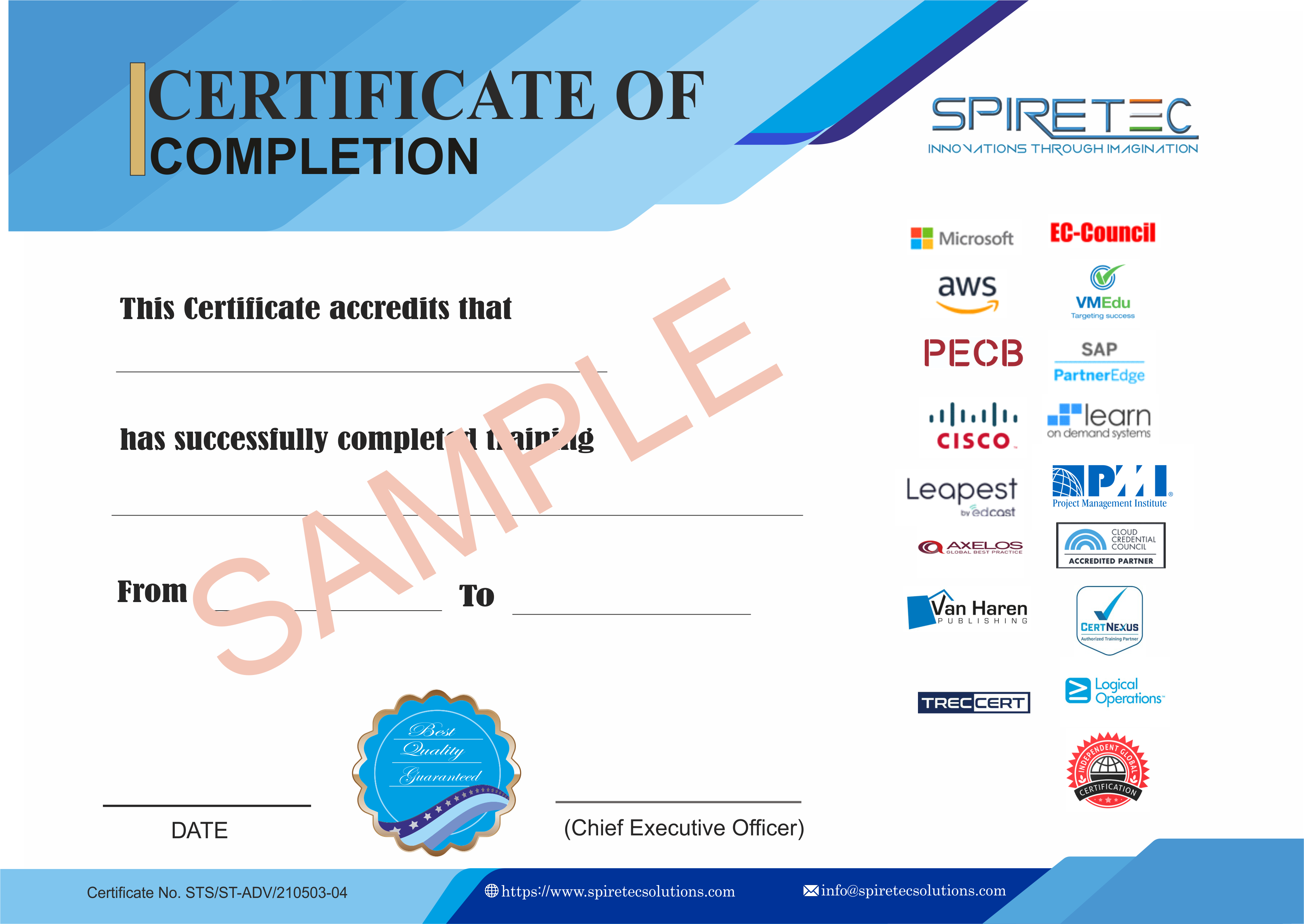The MD - 102 : Microsoft 365 Endpoint Administrator course provides IT professionals with comprehensive knowledge and hands-on skills to deploy, configure, and secure devices using Microsoft Intune. Participants will learn key concepts such as Windows Autopilot deployment, remote device management, and compliance policies. The course covers managing app configurations, endpoint protection, and device updates across Windows, iOS, and Android platforms. By mastering these topics, learners will be prepared for the MD-102 certification, enabling them to streamline endpoint management and enhance enterprise security. Ideal for IT administrators pursuing Intune certification, this MD-102 course equips participants with practical expertise to support modern workplaces and succeed in their MD-102 training.
Audience Profile:
The Microsoft 365 Endpoint Administrator is responsible for:
-
Deploying, configuring, securing, managing, and monitoring devices and client applications in a corporate setting.
-
Managing identity, access, policies, updates, and apps.
-
Working with the M365 Enterprise Administrator to develop and execute a device strategy that aligns with modern organizational requirements.
-
Being well-versed in M365 workloads, with extensive skills in deploying, configuring, and maintaining Windows 11 and later, as well as non-Windows devices.
-
Emphasizing cloud services over on-premises management technologies.
Prerequisites:
Course Outline:
Module 1: Explore the Enterprise Desktop
-
Learn the benefits of Modern Management.
-
Understand the enterprise desktop lifecycle model.
-
Explore hardware strategies and post-deployment considerations.
Module 2: Explore Windows Editions
-
Differentiate between Windows editions.
-
Identify the most suitable Windows device.
-
Learn the minimum hardware requirements for Windows 11.
Module 3: Understand Microsoft Entra ID
-
Explore Microsoft Entra ID and compare it to Active Directory Domain Services (AD DS).
-
Learn how Microsoft Entra ID is used as a directory for cloud apps.
-
Understand Entra ID P1, P2, and Domain Services.
Module 4: Manage Microsoft Entra Identities
-
Use RBAC and user roles in Microsoft Entra ID.
-
Create and manage users and groups in Entra ID.
-
Learn PowerShell cmdlets for managing Entra ID.
-
Synchronize objects from AD DS to Entra ID.
Module 5: Manage Device Authentication
-
Learn Microsoft Entra join and its prerequisites, limitations, and benefits.
-
Manage devices joined to Microsoft Entra ID.
Module 6: Enroll Devices Using Microsoft Configuration Manager
-
Understand Microsoft Endpoint Manager and Configuration Manager.
-
Deploy and monitor the Configuration Manager client.
-
Manage Configuration Manager devices.
Module 7: Enroll Devices Using Microsoft Intune
-
Prepare Intune for device enrollment.
-
Enroll Windows, Android, and iOS devices in Intune.
-
Monitor and perform remote actions on enrolled devices.
Module 8: Execute Device Profiles
Module 9: Oversee Device Profiles
Module 10: Maintain User Profiles
-
Understand user profile types in Windows.
-
Configure user profiles and Folder Redirection.
-
Implement Enterprise State Roaming for Azure AD devices.
Module 11: Execute Mobile Application Management (MAM)
Module 12: Deploy and Update Applications
-
Deploy apps using Intune, Configuration Manager, and Group Policy.
-
Configure Microsoft Store Apps.
Module 13: Administer Endpoint Applications
Module 14: Protect Identities in Microsoft Entra ID
Module 15: Enable Organizational Access
Module 16: Implement Device Compliance
Module 17: Generate Inventory and Compliance Reports
Module 18: Deploy Device Data Protection
Module 19: Manage Microsoft Defender for Endpoint
Module 20: Manage Microsoft Defender in Windows Client
Module 21: Manage Microsoft Defender for Cloud Apps
Module 22: Assess Deployment Readiness
Module 23: Deploy Using the Microsoft Deployment Toolkit (MDT)
Module 24: Deploy Using Microsoft Configuration Manager
Module 25: Deploy Devices Using Windows Autopilot
Module 26: Implement Dynamic Deployment Methods
Module 27: Plan a Transition to Modern Endpoint Management
Module 28: Manage Windows 365
Module 29: Manage Azure Virtual Desktop











 Live Online Training (Duration : 40 Hours)
Live Online Training (Duration : 40 Hours)
